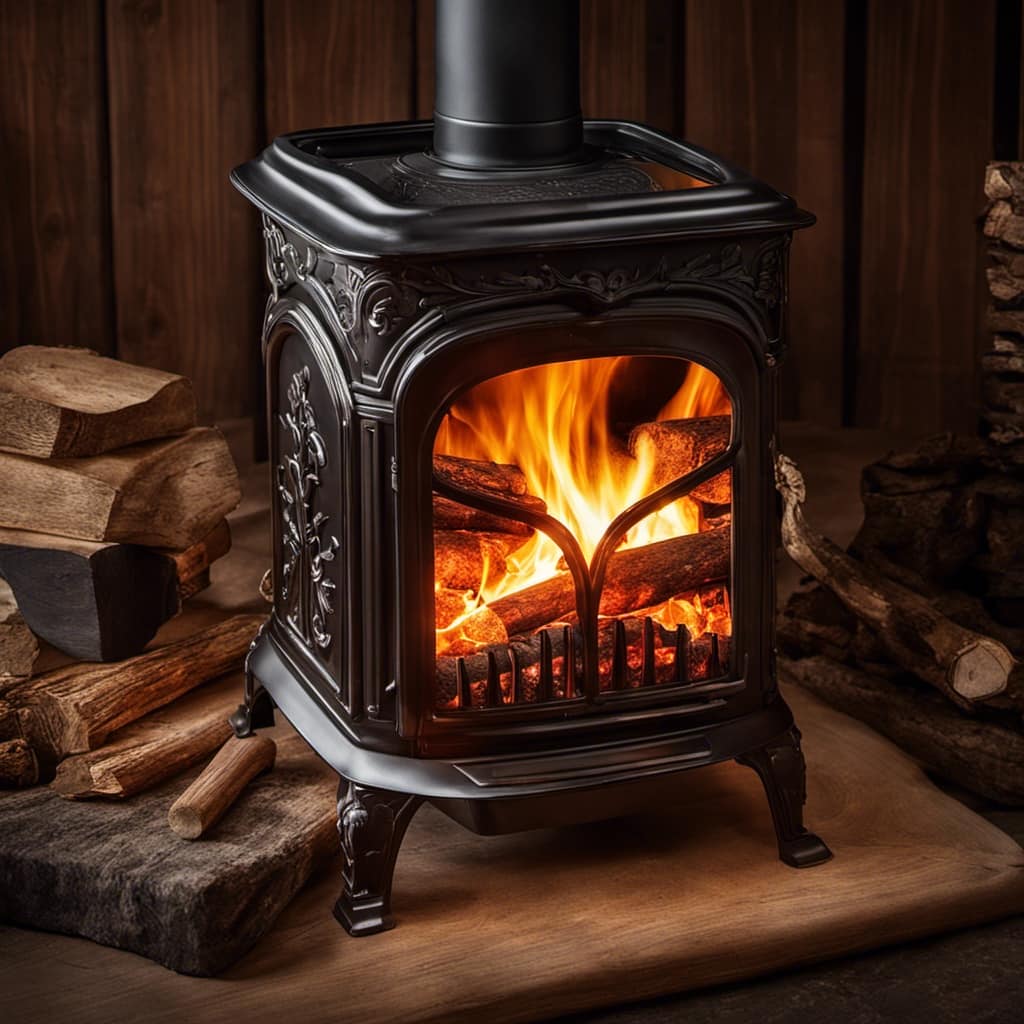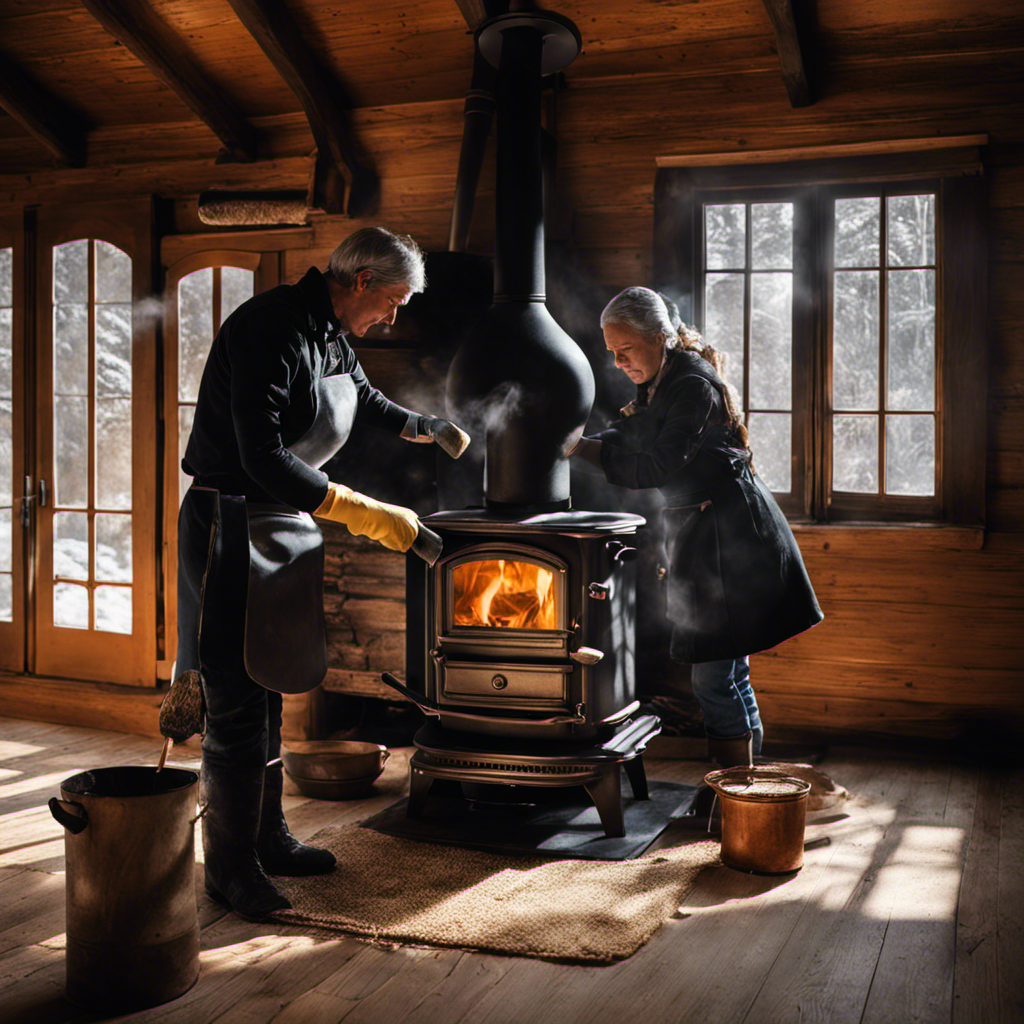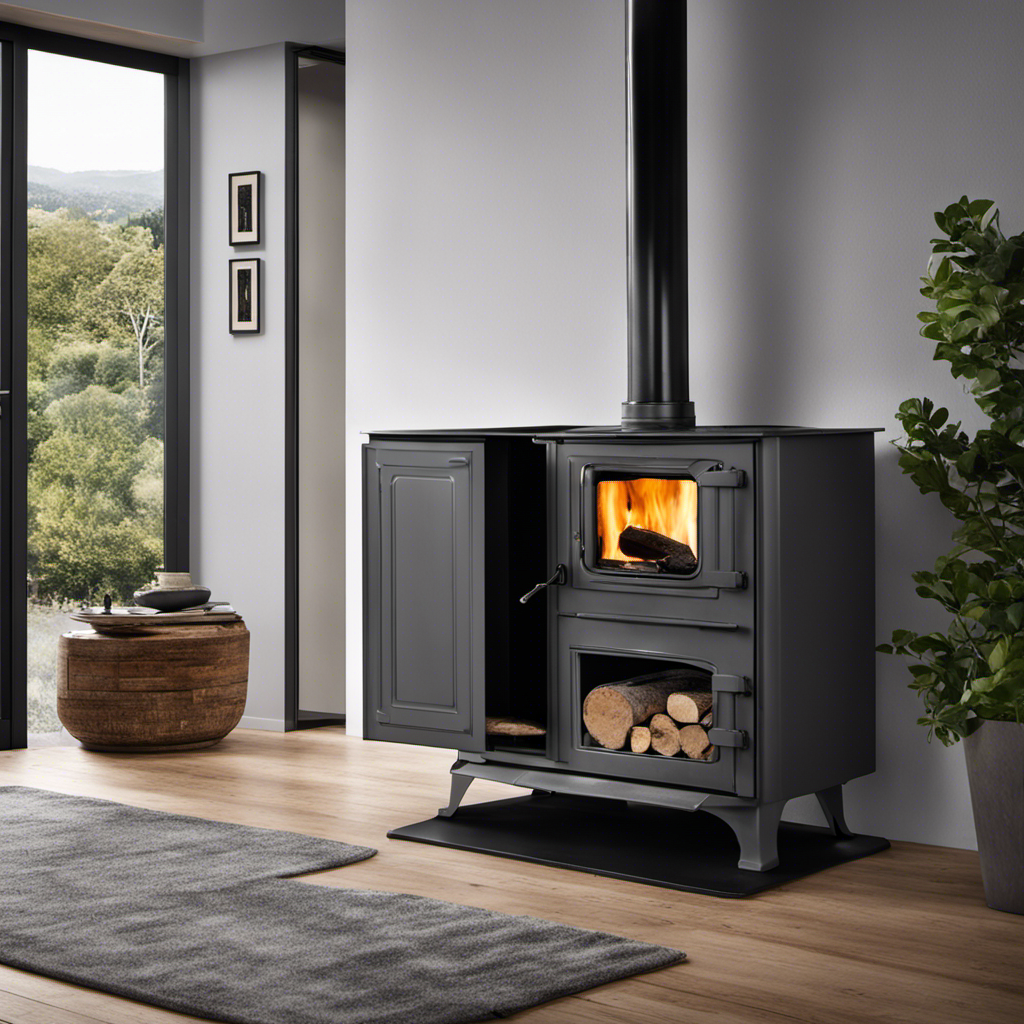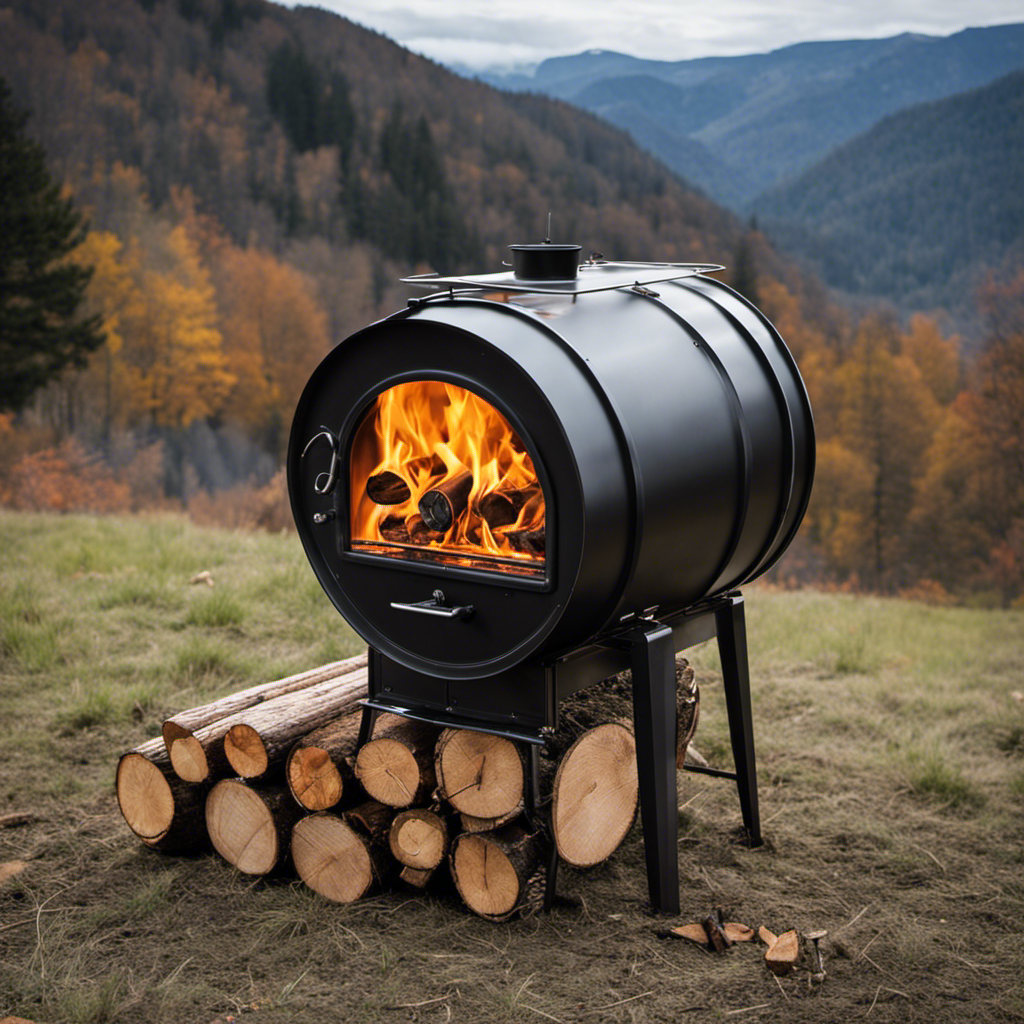I’ve learned that it is essential to regularly remove ash to ensure the wood stove operates at its best. Accumulated ash can obstruct airflow and decrease the stove’s efficiency, resulting in a less effective heating system.
Determining the frequency of cleaning depends on several factors, such as the type of wood and frequency of use.
In this article, I will provide a recommended cleaning schedule, signs that indicate immediate ash removal, and some tips and tricks for efficient cleaning.
Key Takeaways
- Regular ash removal ensures optimal stove performance.
- Cleaning the ash regularly reduces the risk of fire hazards.
- Ash can be used as a fertilizer for plants.
- Wood stove ash acts as a natural pest repellent.
The Importance of Regular Ash Removal
I can’t stress enough how important it’s to regularly remove the ashes from your wood stove. Not only does it ensure the efficient functioning of your stove, but it also has several other benefits.
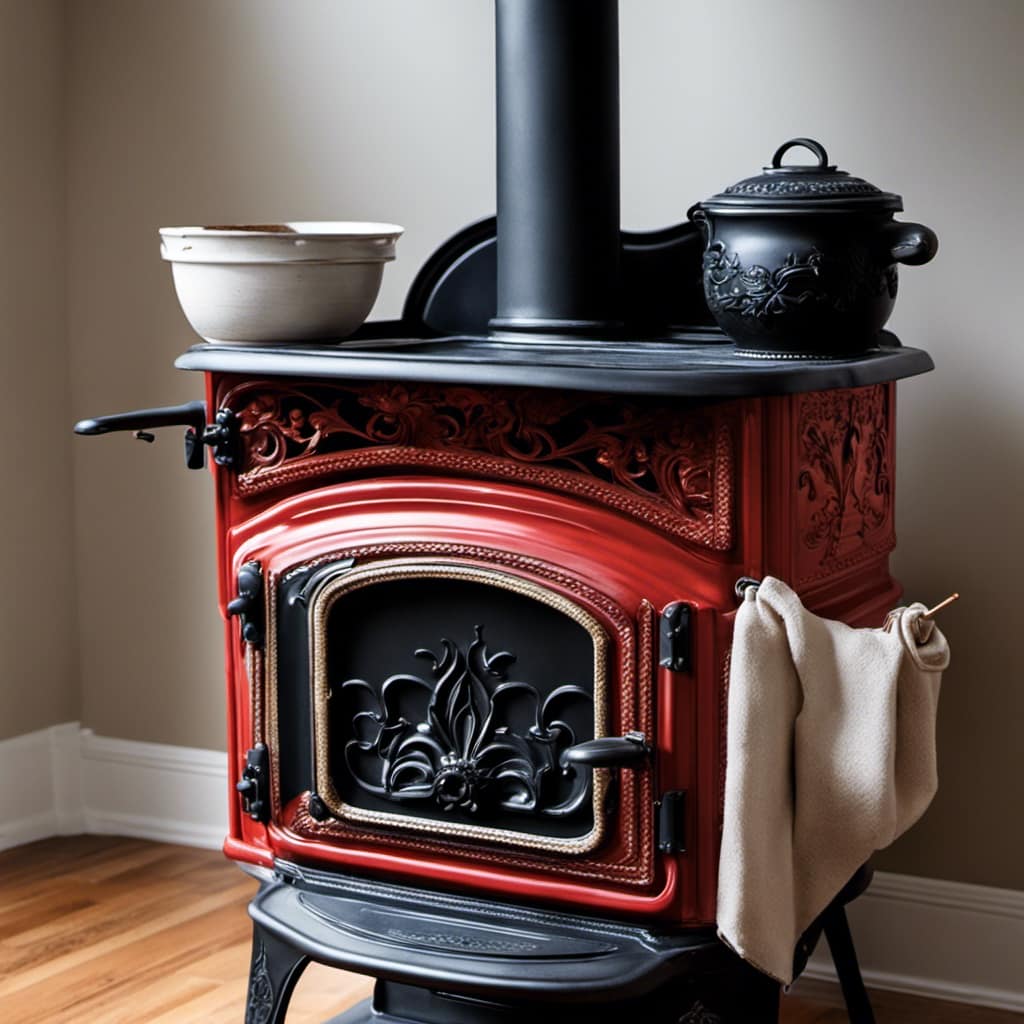
One of the main advantages of wood stove ash is its use as a fertilizer. Ash contains essential nutrients like potassium, calcium, and magnesium, which are beneficial for plants. It can be spread in the garden or mixed with compost to enrich the soil.
Additionally, wood stove ash has alternative uses. It can be used as a natural pest repellent, as it deters slugs and snails. It can also be used to melt ice on driveways and sidewalks.
Considering these benefits, it’s crucial to determine the frequency of ash removal based on factors like stove usage, ash accumulation, and stove performance.
Factors to Consider When Determining Frequency
Determining the frequency of ash removal requires considering factors such as stove usage and ash accumulation. Several factors play a role in determining how often ash should be cleaned out of a wood stove. These factors include the type of wood being burned, the size of the stove, the amount of use, and the level of ash accumulation.

| Factors to Consider | Frequency Determination |
|---|---|
| Type of Wood | Hardwood burns longer and produces less ash compared to softwood. |
| Size of Stove | Larger stoves can hold more ash, allowing for less frequent cleanings. |
| Amount of Use | Frequent use may require more frequent ash removal. |
Taking these factors into account, it is generally recommended to clean out the ash from a wood stove every 1-2 weeks. However, it is important to regularly monitor the accumulation and adjust the frequency accordingly. By doing so, you can ensure optimal stove performance and reduce the risk of fire hazards.
Recommended Cleaning Schedule for Optimal Performance
Regularly cleaning the wood stove and removing accumulated ash is essential for maintaining optimal performance and reducing the risk of fire hazards. Here are some important points to consider when determining the recommended cleaning schedule:
-
Use a metal scoop or shovel: These tools are ideal for safely removing the ash from the wood stove. Avoid using plastic or any other flammable materials.
-
Clean the ash pan: Empty the ash pan regularly to prevent it from overflowing. This will ensure proper airflow and prevent the build-up of ash in the stove.
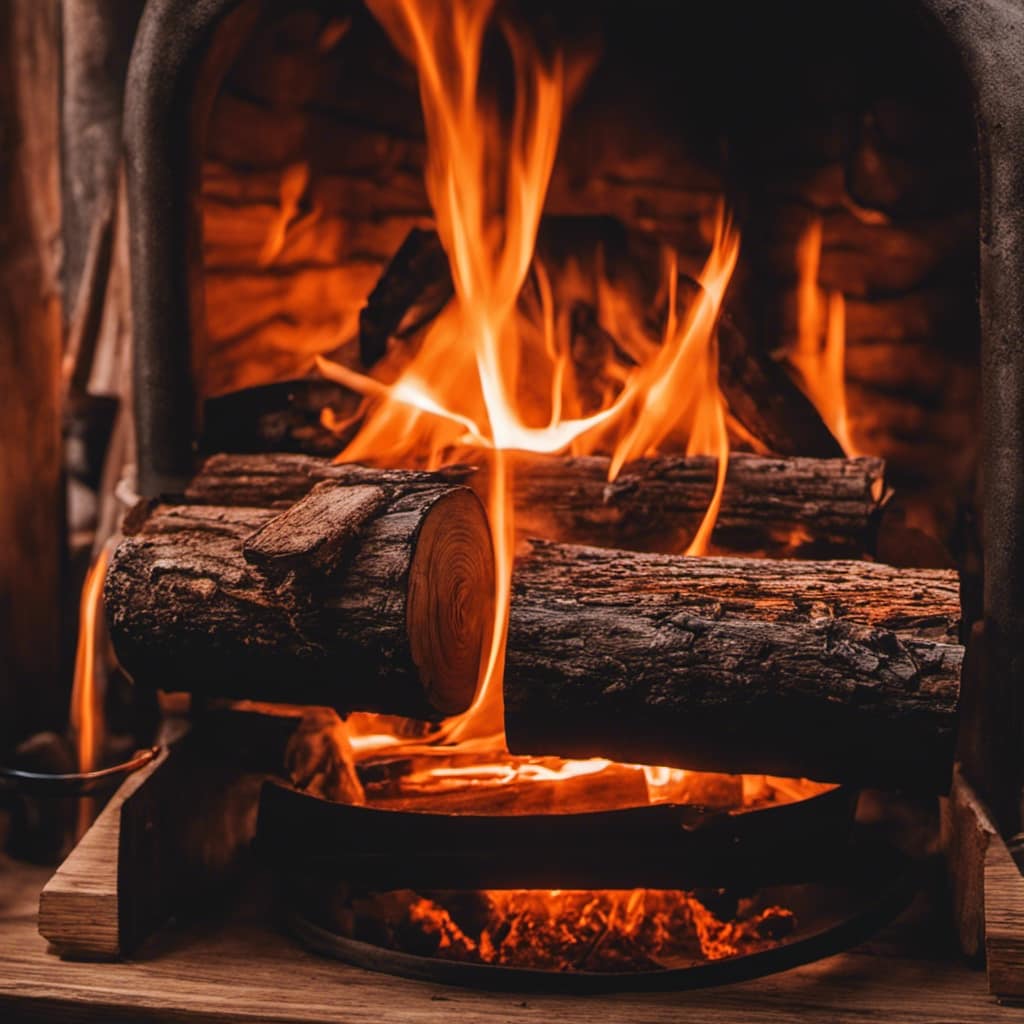
-
Check the chimney: Inspect the chimney regularly for any blockages or creosote buildup. This will help maintain efficient airflow and reduce the risk of chimney fires.
-
Avoid cleaning while the stove is hot: Allow the stove to cool down completely before starting the cleaning process. This will prevent any accidental burns or injuries.
Signs Your Wood Stove Needs Immediate Ash Removal
When should you determine if your wood stove needs immediate ash removal, and what steps should you take? It is crucial to regularly clean the ash out of your wood stove to ensure its optimal performance and safety. Neglecting ash removal can lead to a variety of dangers, including increased risk of chimney fires, reduced heat output, and decreased efficiency. To determine if your wood stove needs immediate ash removal, you should visually inspect the stove and check for the following signs:
| Signs Your Wood Stove Needs Immediate Ash Removal |
|---|
| 1. Excessive ash buildup in the firebox. |
| 2. Difficulty in achieving and maintaining a hot fire. |
| 3. Unpleasant odors or smoke coming from the stove. |
If any of these signs are present, it is important to take immediate action. To safely remove ash from your wood stove, follow these steps:
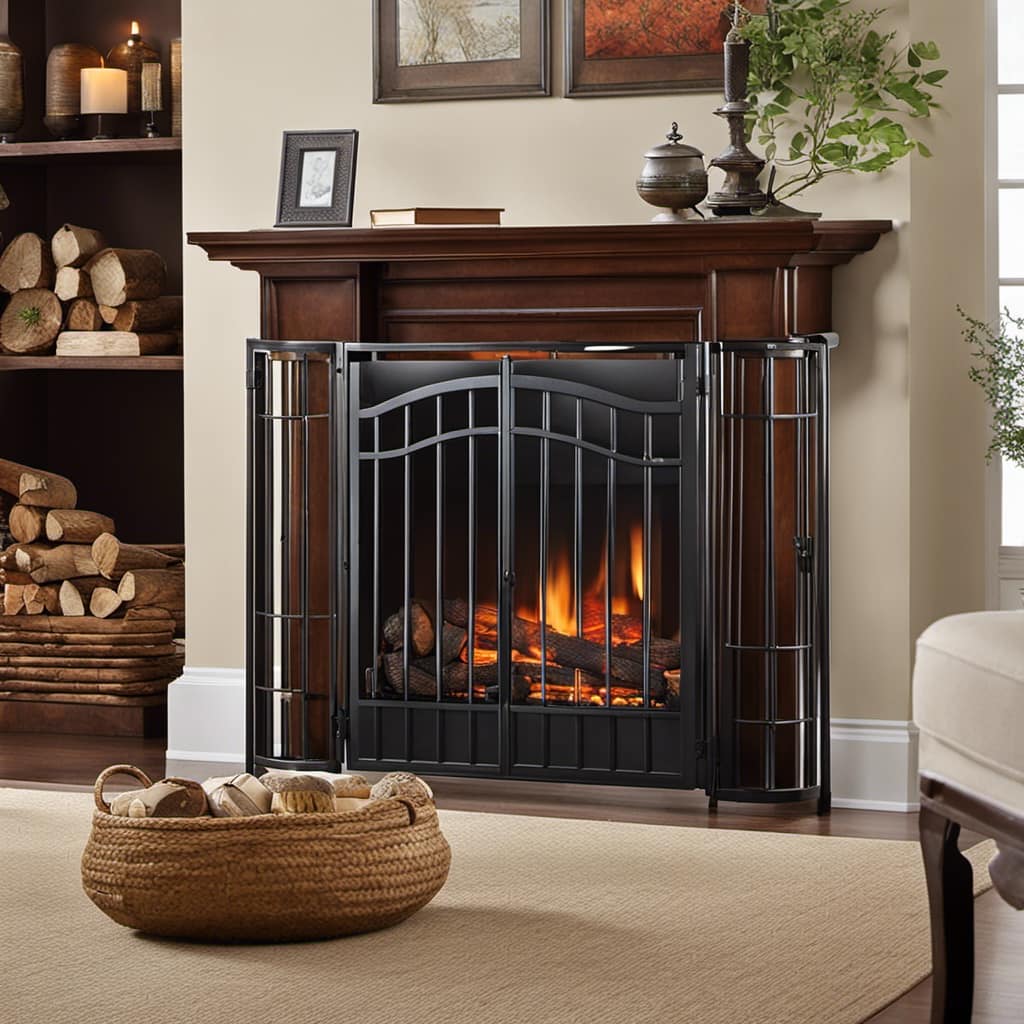
- Allow the stove to cool down completely.
- Use a metal ash shovel to scoop out the ash.
- Dispose of the ash in a metal container, away from combustible materials.
Tips and Tricks for Efficient Ash Cleaning
I’ve found that using a metal ash shovel is the most efficient way to clean out my wood stove’s ash. The sturdy construction and heat resistance of the shovel make it perfect for handling hot ash without any risk of damage.
In addition to the ash shovel, there are several other tools that can greatly enhance the effectiveness of ash cleaning. These include:
-
Ash vacuum: A specialized vacuum designed to safely and effectively remove ash from the stove.
-
Ash pan: A metal pan that can be placed under the stove to catch the falling ash for easy disposal.

-
Ash brush: A brush with stiff bristles that helps in loosening and removing stubborn ash deposits.
-
Dust mask: A protective mask that filters out fine ash particles, preventing them from being inhaled.
Frequently Asked Questions
Can I Leave the Ash in My Wood Stove for Extended Periods of Time Without Cleaning It?
Leaving ash in a wood stove for extended periods can have negative effects. It can reduce the stove’s efficiency, increase the risk of fire, and release harmful particles into the air. It is not safe to leave ash in a wood stove.
Will Leaving Ash in My Wood Stove Affect Its Overall Performance?
Leaving ash in your wood stove for extended periods of time can negatively impact its overall performance. The buildup of ash can reduce heating efficiency and affect the stove’s ability to properly burn wood.
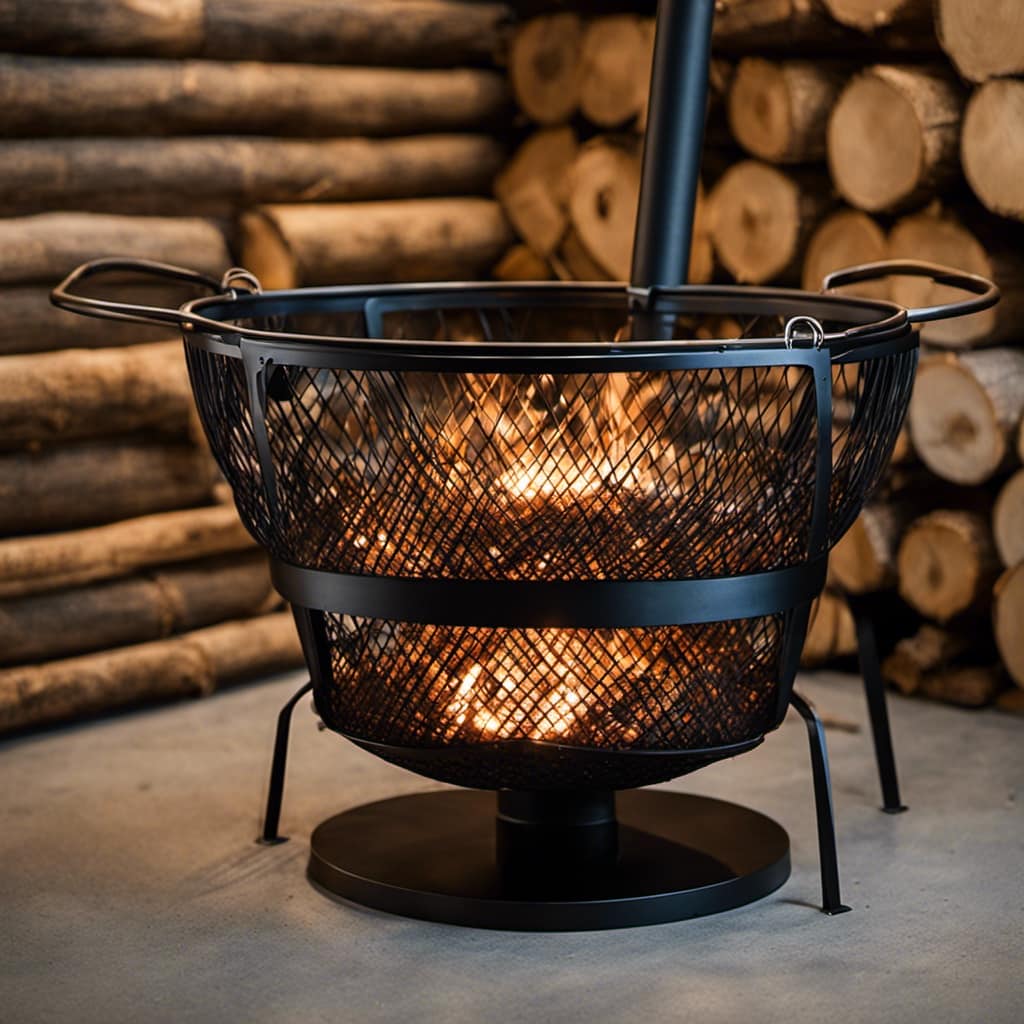
Are There Any Specific Types of Wood That Produce More Ash and Require More Frequent Cleaning?
Types of wood with high ash content, such as oak and maple, may require more frequent cleaning of the wood stove. To properly dispose of wood stove ash, wait until it has completely cooled and then place it in a metal container.
Can I Use the Ash From My Wood Stove for Any Other Purposes?
I can use the ash from my wood stove for multiple purposes. Some uses of wood stove ash include as a fertilizer, for making soap, as a de-icer, and even as a natural pest repellent. The benefits of reusing ash are numerous.
How Often Should I Clean the Chimney or Flue in Addition to Cleaning the Ash Out of the Wood Stove?
How often should I clean the chimney or flue? Leaving ash in the wood stove for extended periods can affect performance. To maintain optimal efficiency, I recommend cleaning both the chimney and removing ash regularly.
Conclusion
In conclusion, regularly cleaning the ash out of your wood stove is essential for maintaining optimal performance. By removing ash on a recommended schedule, you can prevent airflow blockages and ensure efficient heat production.
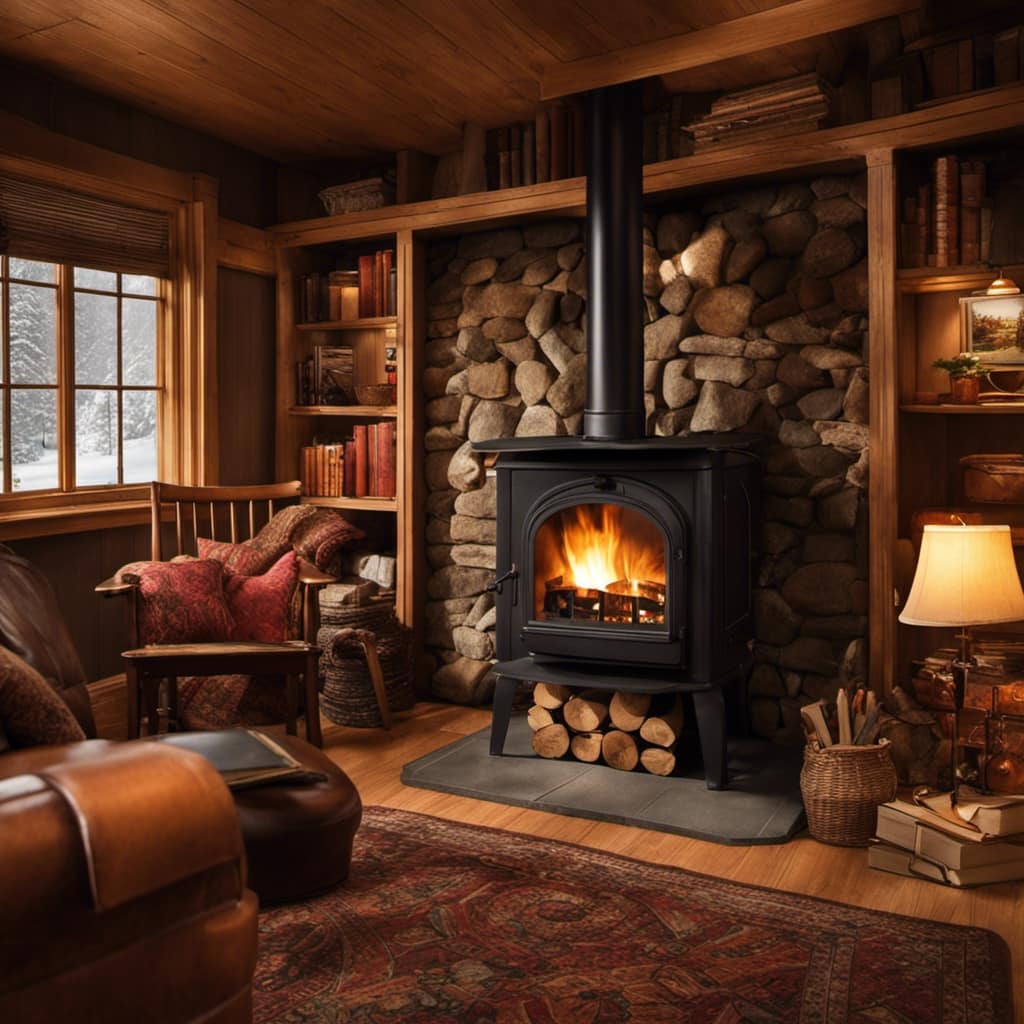
Think of it like cleaning out the clutter in your home – when you clear away the ash, your wood stove can breathe freely and provide cozy warmth.
So, don’t neglect this important maintenance task and enjoy a clean-burning, efficient wood stove all winter long.
Growing up surrounded by the vast beauty of nature, Sierra was always drawn to the call of the wild. While others sought the comfort of the familiar, she ventured out, embracing the unpredictable and finding stories in the heartbeat of nature.
At the epicenter of every remarkable venture lies a dynamic team—a fusion of diverse talents, visions, and passions. The essence of Best Small Wood Stoves is crafted and refined by such a trio: Sierra, Logan, and Terra. Their collective expertise has transformed the platform into a leading authority on small wood stoves, radiating warmth and knowledge in equal measure.




